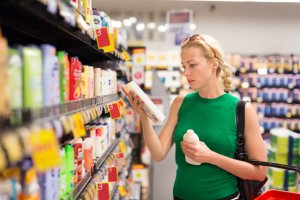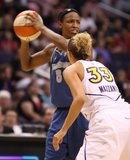 So, you are fortunate enough to get your CPG product on the retail shelf. Now you have an opportunity to be discovered by shoppers, but they have got to see you and you’d better have a compelling message.
So, you are fortunate enough to get your CPG product on the retail shelf. Now you have an opportunity to be discovered by shoppers, but they have got to see you and you’d better have a compelling message.
Because retail shelf space is so limited, you may only get one or two of your packages actually facing the customer and the rest lined up behind them on the shelf. In the merchandising trade, these are known as “facings,” or “faces showing.”
More of a Solution than a Creation
Assuming you have a great package design with an excellent logo and label, your last chance to catch their eye and deliver a compelling reason to buy is shelf signage, also known as shelf-talkers, shelf cards, shelf hangers, point-of-sale materials (POS), or point-of-purchase materials (POP). But no matter what you call them, they are very small. If not, they simply don’t go up, or they get torn down because they are blocking access to the shelf below or are too wide and block other shelf-talkers or reorder codes. Typically they can’t be wider than your package.
So, it’s not the world of all possibilities. It’s the world of limited possibilities. Shelf-talker design is not so much of a creation as it is a solution to the realities of the harsh retail environment. Here are some of the limitations you face for with a shelf talker:
Small and Far Away
It has to fit in the space allotted, which is dependent on the store and the width of the packages in your category. In beverage, for instance, it’s 4 inches max wide by 4 inches max tall. That’s pretty small. It’s smaller than your display screen. Many CPG brand builders design on a display screen and sit 18 inches away from the image. It looks great to them.
But now, let’s get practical. Can you read it from four feet away? How about if it’s not backlit by your display monitor? In fact, when it gets sized and printed, it’s downright tiny and hard to read – no matter what it says or shows.
The Message
The message must be clean and readable in clear and large font. Forget serif, stylish, or curlicue font. The message should include just three or four points, not counting the price (one or two is best):
- Third party endorsement (like an award, or celebrity endorsement). It’s best to use medallions for awards, and one to two words for celebrity endorsements.
- The expectation or benefit of the product; what it delivers. It’s best to describe a feeling the customer will enjoy as a result of using the product.
- The distinguishing characteristics that set your product aside from the rest, using words like “finally,” “only,” and “original.” Or where and how it’s made.
- Descriptors like smooth, delicious, and a perfect match for … We once used a very successful shelf talker that just had one word in big cartoon font that simply said, “YUMMY!”
The message should address what the potential customer is looking for. They don’t know your product, so a third-party endorsement is critical when you roll out your product. Shoppers don’t know why they should buy it, so your product’s distinguishing characteristics are vital. You may not have more room than that. Folks are not going to get up close and read what you have designed no matter how slick and cool it looks on the screen. So you will have to really reduce your message. Or better yet, display that other stuff on a back card (a.k.a., case rider).
Follow the Rules
Ideally, whatever you say should not be less than ½ inch-high font, and the bigger the better. But remember, they must be able to read it from four feet away (the distance from their eye when pushing their cart, to the shelf where your product and sign are). And also your message must have ample white space around it to be read easily. These are not our rules – they are the reality of the retail environment.
We suggest that our CPG brand building clients go to the stores and look around. See what pops and why, take notes, then find the perfect solution! And remember, size matters!

